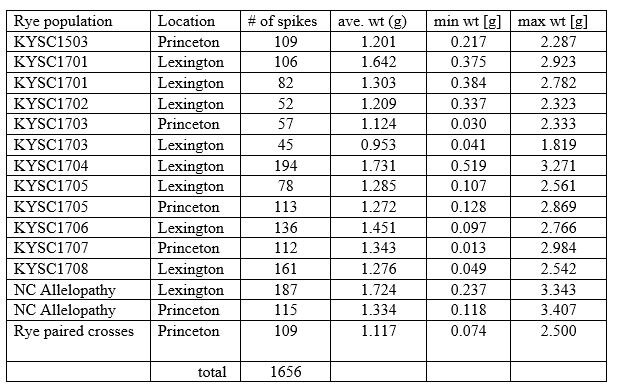Breeding New Rye Cultivars for the Midwest
Tim Phillips (2017-2018)
Spike fertility study
Fifteen populations of cereal rye were increased in the field and harvested in 2018 for use in yield trials. Heads were snapped from these lines in order to assess whether selection for spike fertility (seed number and weight) would be advisable. The following table shows the snapped head data from 2018. These seeds were used to plant head rows in the fall 2018 at Lexington to test the correlation between parent spike seed weight and progeny row seed yield.
Table. 1. Snapped rye spikes harvested in late June, 2018 at Princeton or Lexington, KY with spike number per population, average seed weight per spike, and minimum and maximum spike weights, in grams.
New rye populations
A total of 16 synthetics were made during winter and early spring in the greenhouse. These new populations were constructed using 4-110 parents/population, with a total of 444 plants being used in all 16 populations (with most populations having 20-40 parents). Most of the parents were from European rye cultivars, historical southern US varieties, adapted current varieties (such as Aroostook, Wrens 96, and Maton), and elite lines from the U.K. rye breeding project. Additionally, 216 paired crosses were made during Feb-May, 2018 in the greenhouse. These 16 populations were planted in isolation for seed increase and selection of spikes to begin recurrent selection for higher fertility and grain yield.

